Table of Content
- When do you need to use an IP44 light in a bathroom?
- Which are the areas where IP44 lights need to be used?
- IP44 Rating Diagram
- How to convert non-IP44 lights for bathroom use?
- Can Fritz Fryer lights be converted for bathroom use?
- Grafton Lights
- Hereford Ceiling Lights
- Wellington Lights
- Hereford Wall Lights
- Sellack Lights
- Zone Summary
- IP explanation and ratings
When do you need to use an IP44 light in a bathroom?
Finding the right light fittings to use in your bathroom can be a tricky matter, especially if your electrician or quick internet search points towards IP44 rated fittings. Whilst there are areas where IP44 rated fittings are essential or highly recommended, often a standard fitting (IP20) will suffice – giving you a much greater scope when choosing the right fitting.
In order to be clear about what you are shopping, for it is important to understand the regulations in a bathroom.
Which are the areas where IP44 lights need to be used?
Below, we have included a diagram that describes the different zones of a bathroom. According to the regulations, IP44 rated fittings are required when located inside the area described as Zone 2. Therefore if you are using a pair of wall lights either side of the mirror, make sure they are located just outside of zone 2 so you can use a standard fitting i.e. not IP44. It is worth noting that some common sense should be applied and it is always worth taking the advice of the electrician.
Zone 0 and Zone 1 are the most heavily regulated when it comes to safety – Zone 0 covers submerged lights which must be completely immersion proof, while zone 1 refers to the area immediately above the bath (to a height of 2.25m from the floor) where IP65 lighting is recommended.
IP44 lighting is suitable for use in Zone 2 and Zone 3 (Outside Zones) – in other words, within 60cm from the edge of the bath and to a height of 2.25m from the floor. Note that inside a 60cm radius above a basin is also Zone 2 and requires fittings rated as IP44 or higher.
IP44 Rating Diagram
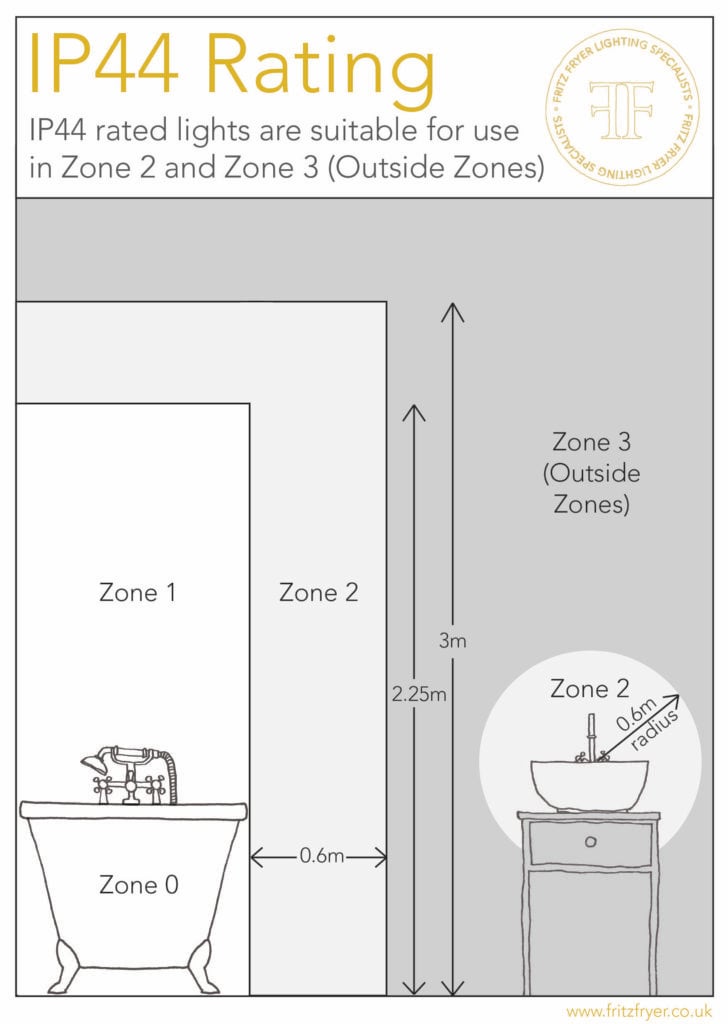
How to convert non-IP44 lights for bathroom use?
Keep in mind that not all bathroom fixtures are at risk of water ingress and therefore don’t need to be IP44 rated. Since IP44 fittings are designed for areas where water spray is a possible hazard, there are a number of tricks you can use to get the non-IP44 light you want to fit the regulations.
If you have your sights set on a bathroom pendant, but it hangs too low above your bath or sink, one possible solution is changing the length of the flex to keep it out of the splash zone and into zone 3. After all, it’s a matter of centimetres to move/elevate your fitting from one zone to the next.
Another easy trick for making your preferred light bathroom-suitable is by using a sensible shade to prevent splashing. Large shades with small openings are the ideal choice to prevent water from getting in – like our Customisable Grafton Globe.
Can Fritz Fryer lights be converted for bathroom use?
The majority of the lighting fixtures we offer can be adapted for bathroom use, even if they are not specifically included in our bathroom lights range. Below, we put together a list of some of the lights we stock that are often used in bathrooms instead of the IP44 equivalent:
GRAFTON CUSTOMISABLE PENDANT LIGHT
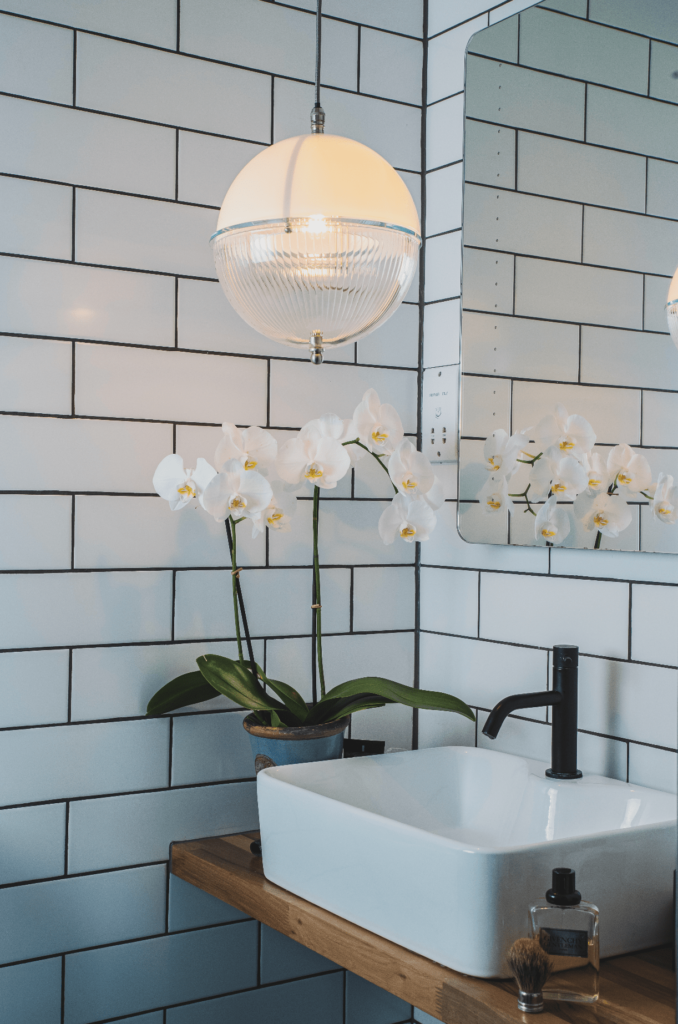
White top & ribbed bottom Grafton globe, featured on a nickel & elephant grey bathroom pendant set.
Alternatively, it could be as simple as flipping the wall lights above your sink from a downlight into an uplighter to keep away from water splashes.
Very often IP44 lights are more expensive and limit you in terms of choice, so knowing these tricks can also save you money!
HEREFORD GLOBE PENDANT LIGHT
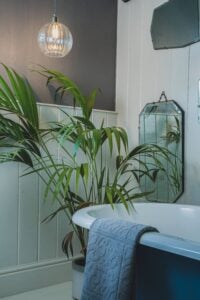
Ribbed glass Hereford, featured on a nickel & elephant grey bathroom pendant set.
WELLINGTON TEARDROP PENDANT LIGHT
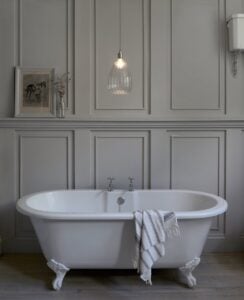
Ribbed glass Wellington, featured on a nickel & elephant grey bathroom pendant set.
SMOKED HEREFORD GLOBE SWAN NECK WALL LIGHT
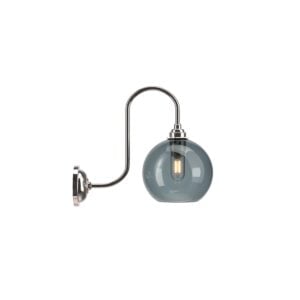
Smoked glass Hereford, featured on a Nickel swan neck bathroom wall light.
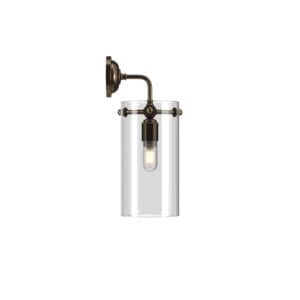
SELLACK CONTEMPORARY BATHROOM WALL LIGHT
Clear glass Sellack, featured on an antique brass contemporary bathroom wall light.
If a light on our site catches your eye and you’d like to have it converted for bathroom use, please contact us to enquire!
Bathroom installers are sometimes quick to specify that you need IP44 lights and protest against installing anything but, regardless of whether regulations are complied with. However, knowing the rules and being aware of the ways you can incorporate non-IP44 lighting into your bathroom will allow you to push back and question the installers. Always err on the side of caution and be sensible, but if you want a beautiful chandelier in your bathroom and have sufficient ceiling height to locate it outside of zone 2, there is no need to be deterred!
Hopefully, you’d be able to benefit from the tricks we shared and save money on your bathroom lighting installation! If you have any questions or are still unsure about which lights are best suited for you, don’t hesitate to get in touch!
Zone Summary
| Zone 0 | Inside the bath or shower. Any fitting used in this zone must be low voltage (max 12V) and rated at least IP67, which is totally immersion proof. |
| Zone 1 | Above the bath or shower to a height of 2.25m. A minimum rating of IP44 is required here, but it’s often recommended to use IP65 for better protection against water jets. |
| Zone 2 | The area stretching 0.6m outside the perimeter of the bath and to a height of 2.25m from the floor. In this zone, an IP rating of at least IP44 is required. |
| Outside Zones (Beyond Zone 2) | Here, no specific IP rating is required, but lights must be suitable for their location and not be subjected to water jets. |
IP Explanation and Ratings
The international standard EN 60529 provides a detailed classification system used globally to rate the level of protection that electrical equipment enclosures offer against the entry of foreign objects (such as tools, dust, and fingers) and moisture. This system, crucial for ensuring the safety and integrity of electrical equipment, is known as the Ingress Protection (IP) rating. It employs a format where ‘IP’ is followed by two or three digits (for example, IPX4 focuses solely on moisture resistance, with ‘X’ replacing the digit for foreign object protection). A third digit is occasionally included to offer additional information about protection. Understanding and adhering to these ratings is key for maintaining electrical safety and functionality.
Protection Levels – First Digit
The initial digit in the IP rating system signifies the level of protection provided against contact with moving parts (excluding components like smooth rotating shafts) and the safeguarding of equipment from the entry of solid foreign objects. Understanding this first figure is essential for ensuring both personal safety and the integrity of the equipment’s enclosure.
| 0 | No special protection |
| 1 | Protection from a large part of the body such as a hand (but no protection from deliberate access); from solid objects greater than 50mm in diameter. |
| 2 | Protection against fingers or other object not greater than 80mm in length and 12mm in diameter. |
| 3 | Protection from entry by tools, wires, etc., with a diameter of thickness greater than 1.0mm. |
| 4 | Protection from entry by solid objects with a diameter or thickness greater than 1.0mm |
| 5 | Protection from the amount of dust that would interfere with the operation of the equipment. |
| 6 | Dust tight. |
Protection Levels – Second Digit
The second number in the IP rating denotes the extent of defense the internal components of the enclosure have against different types of moisture intrusion, such as dripping, spraying, and submersion. Recognizing the importance of this digit is crucial for ensuring the durability and safe operation of the equipment.
| 0 | No special protection |
| 1 | Protection from dripping water. |
| 2 | Protection from vertically dripping water. |
| 3 | Protection from sprayed water. |
| 4 | Protection from splashed water. |
| 5 | Protection from water projected from a nozzle |
| 6 | Protection against heavy seas, or powerful jets of water. |
| 7 | Protection against immersion. |
| 8 | Protection against complete, continuous submersion in water. |
Need a little more help?
Speak to a member of our team to discuss how you can incorporate IP44 lighting into your home or commercial space, and find the right fittings for your space.

